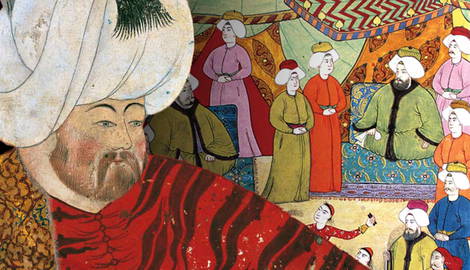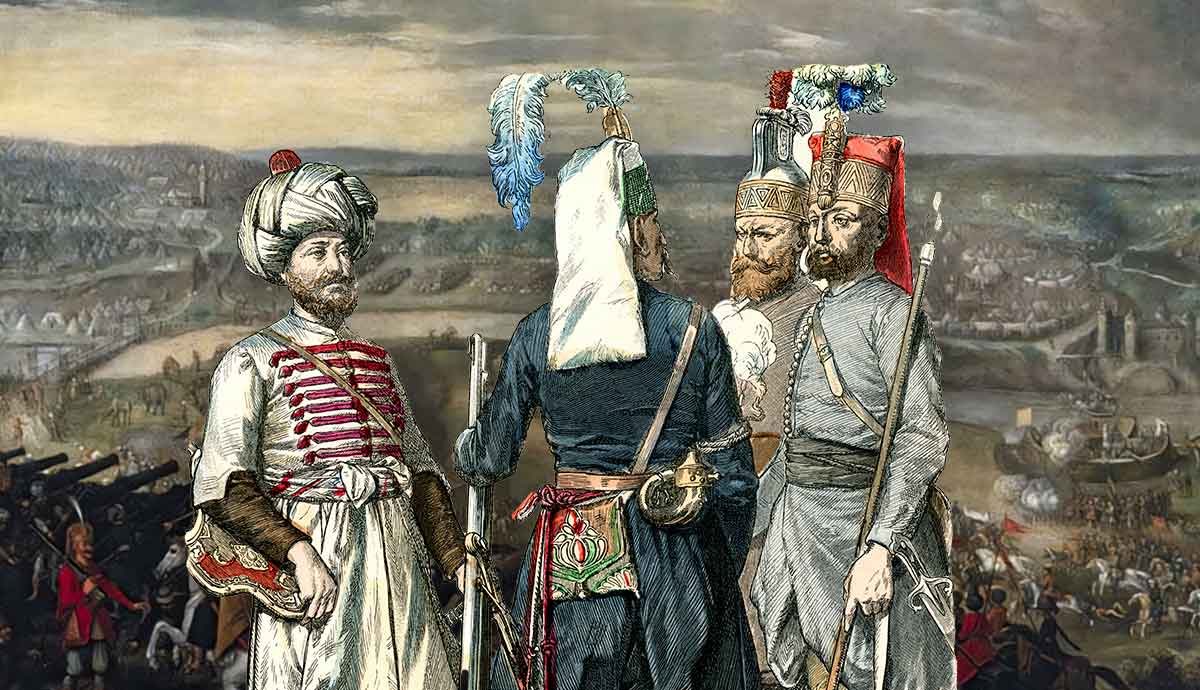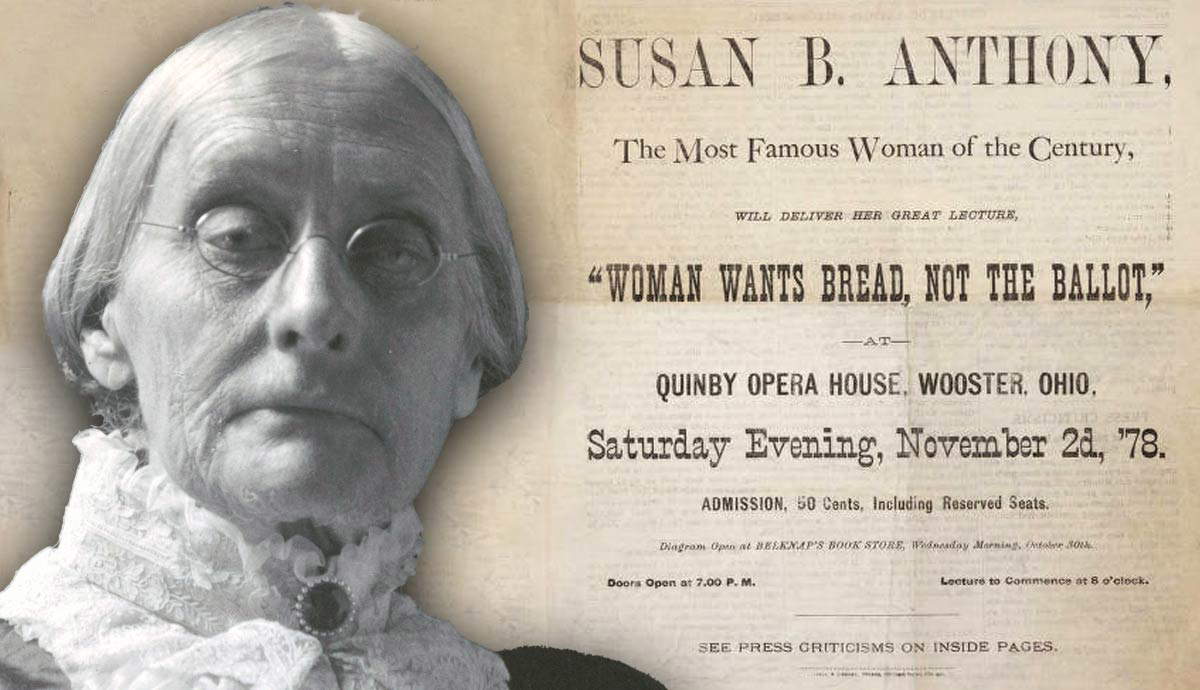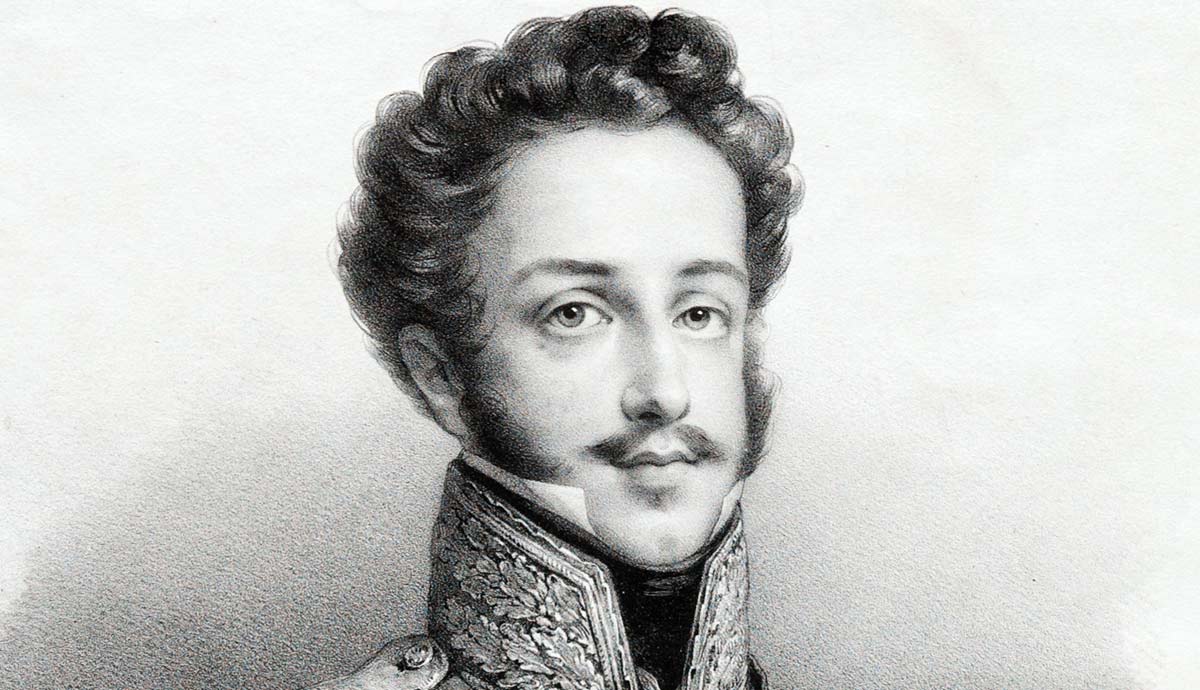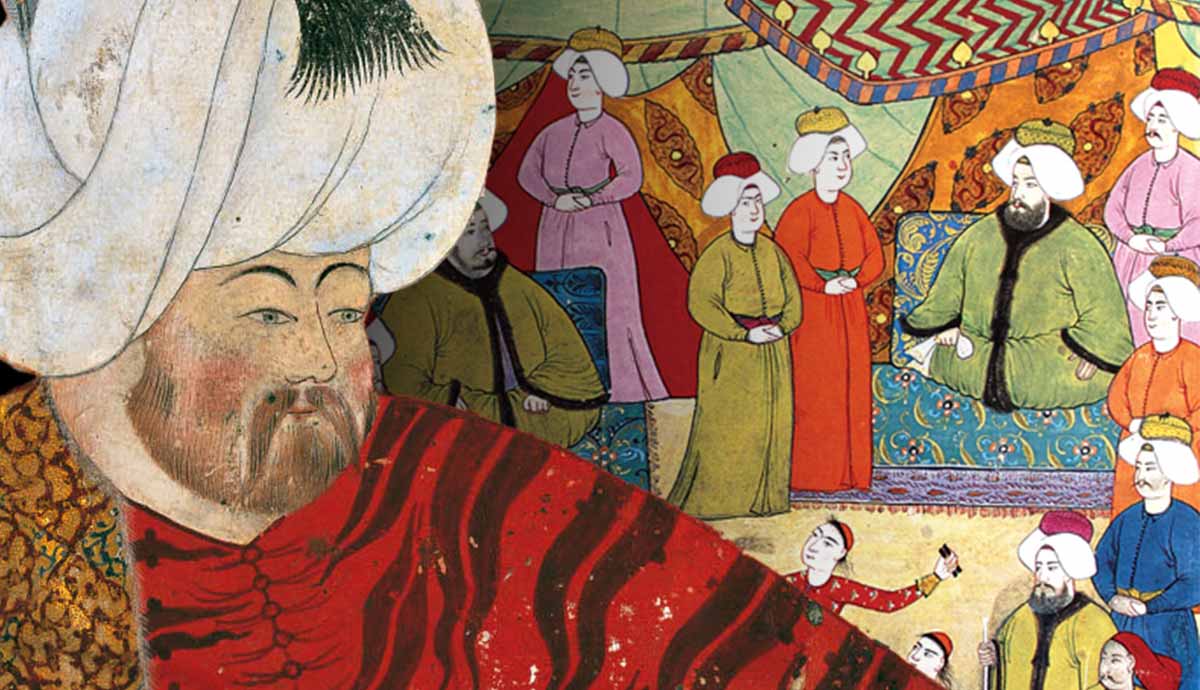
Conquest and war were often the raison d’etre of Ottoman Sultans. However, like ordinary people, sultans learned special trades and skills and enjoyed dabbling in hunting, poetry, and the performing arts.
1. Tradesmanship
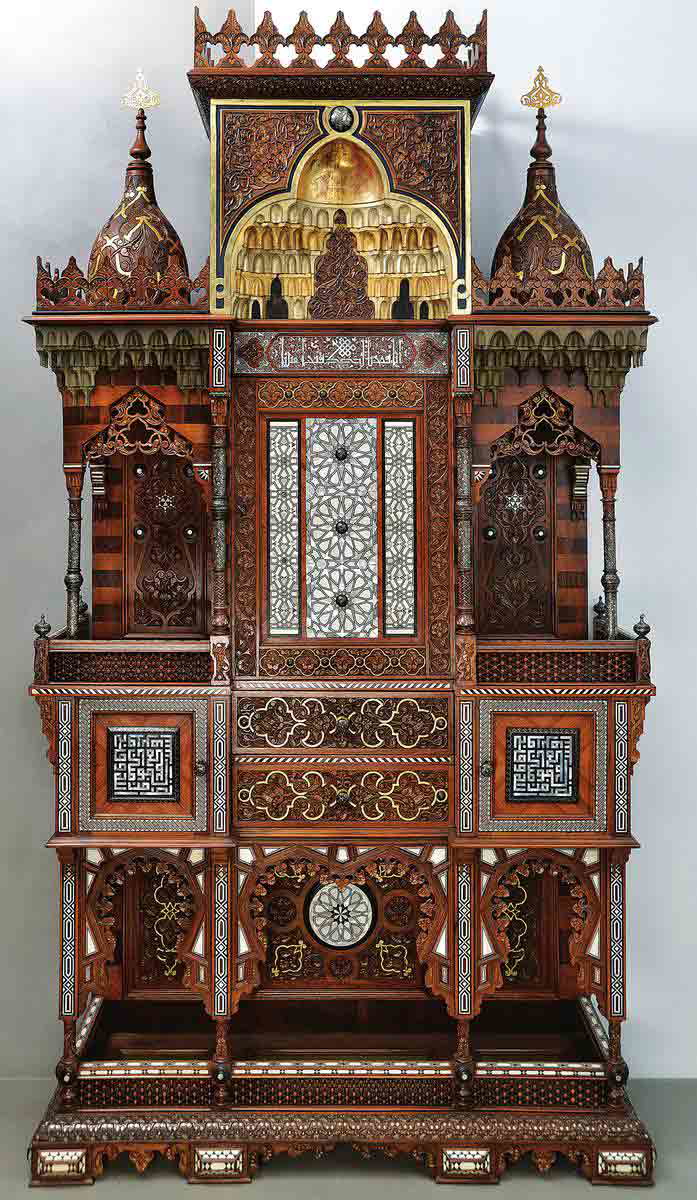
Ottoman princes were expected to master a trade or craft as part of their princely training. As apprentices, princes would not only learn the disciplinary and physical skills of craftsmanship but could also earn some extra income.
When a prince became Sultan, he would continue his efforts in the trade he learned in his youth. The crafts that Ottoman princes learned depended upon their personal interests. Carpentry, jewelry-making, calligraphy, and musical composition were some of the most popular skills that they learned.
One of the earliest sultans, Mehmed I (r. 1413-1421) earned the moniker kirisçi, meaning “bowstring-maker,” due to his skill in making bows and bowstrings. As an avid hunter, Mehmed enjoyed the artistic process of creating the weaponry needed to hunt animals.
Alternatively, Sultan Suleyman the Magnificent (r. 1520-1566) had a keen interest in jewelry, which led him to pursue a career as a jeweler. He would design and create jewelry for his beloved wife Hürrem. Sadly, none of these pieces have made it to the present day.
Abdulhamit II (r. 1876-1909) was a skilled carpenter whose creations—unlike Suleyman’s—have been preserved. Abdulhamit even had a small carpenter’s workshop installed in the Yildiz Palace, where he resided.
2. Hunting

Hunting was one of the greatest hobbies of medieval and early modern Ottoman sultans. The steppe nomadic origins of the Turks made hunting—especially with bows and arrows—almost a cultural pastime. In Ottoman culture, a skilled hunter and horse archer came to represent strength, power, and masculinity.
Sultans would go on lengthy hunting trips with their retinues, and palace officials, like the royal armorer, falconer, and squires would assist him on his journey. For shorter hunting trips, large hunting grounds were built in cities like Edirne that were close to the imperial capital, Istanbul.
Although this was a normal and acceptable pastime, some sultans created controversy because of their obsession with the sport. Mehmed IV “the Hunter” (r. 1648-1687) spent most of his time hunting in Edirne, so much so that it became somewhat of an imperial residence for him.
However, this was taken as an indication of his disinterest in socio-political matters, such as the loss of Buda Castle (Hungary) in 1686. The ensuing social unrest led Mehmet to declare that he would give up hunting and focus on state affairs.
3. Gaming and Sports
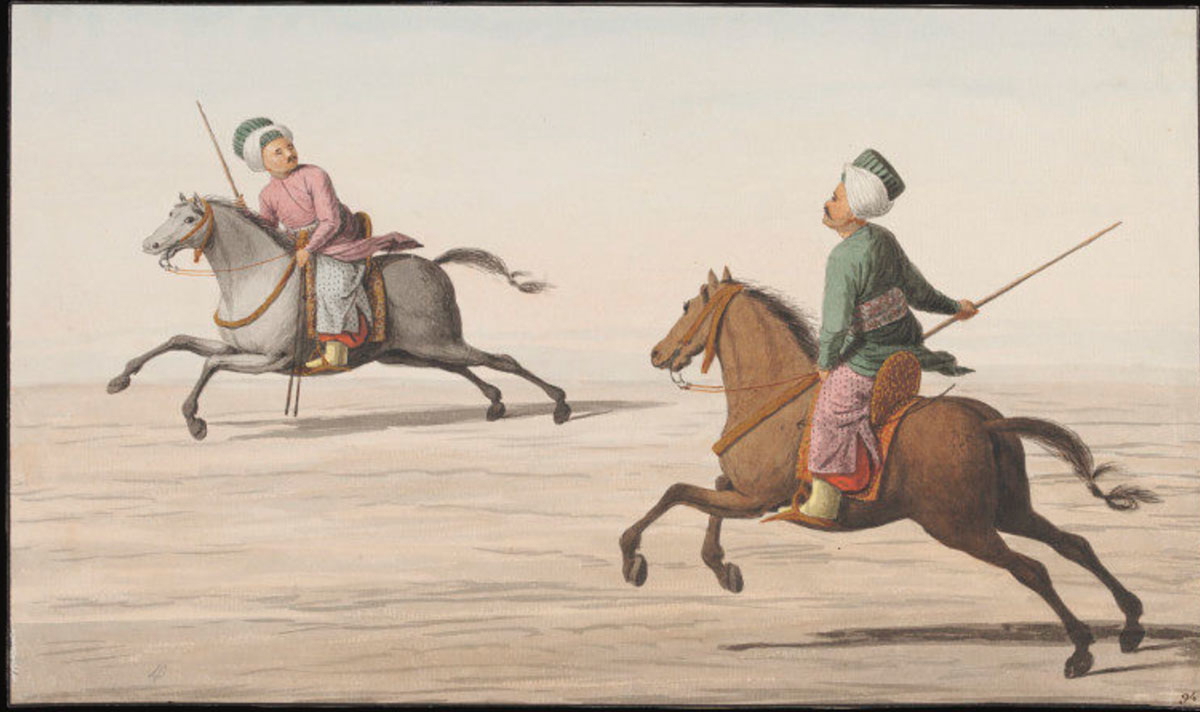
Physical activities and sports were a way for Ottoman sultans to demonstrate their power and strength. Cirit, or javelin, was a traditional sport that originated amongst Turkic tribes on the steppes of Central Asia. The aim for these athletes on horseback was to throw javelin rods around 110 cm (43 inches) long at their opponents. In Ottoman Turkey, this sport doubled as a military training exercise for Sultans.
After the advent of firearms, shooting sports also gained popularity. Sultan Mahmud II (r. 1808-1839) enjoyed shooting rifles and, like his ancestors, commemorated his skill by erecting target stones around Istanbul.
Using a gun, Mahmud shot an ostrich egg from a distance of around 735 meters (almost half a mile). In 1811, he had a target stone erected that contained an epigraph about the accomplishment. The neighborhood of Dikilitaş (meaning “obelisk”) in Istanbul received its name from this target stone.
4. Drinking Parties
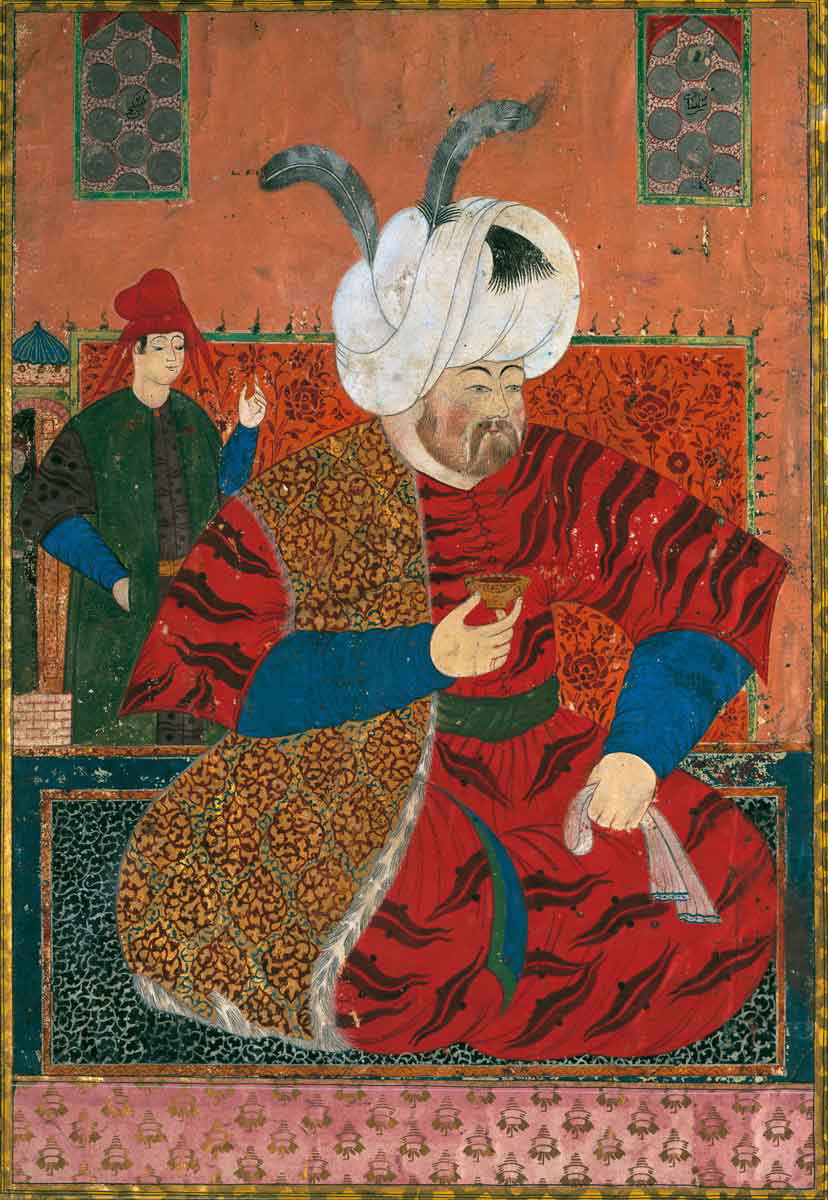
The Ottoman Empire had two different sets of laws: one was the religious/Islamic law, called Sharia. The other was a more secular sultanic law, called the Kanun. According to the Sharia law adopted by the Ottomans, alcohol was a prohibited substance. However, this did not stop Sultans from enjoying a glass or two of wine.
Many Ottoman sultans, such as the famous Mehmet II (r. 1451-1481) reportedly enjoyed drinking wine. Others, like Bayezid I and Selim II, were more passionate about the substance. Due to his drinking habits, the latter became known as Selim the Sot. He also tried to decriminalize the consumption of alcohol. According to contemporary sources, Selim also enjoyed hosting drinking parties where his jesters, dwarves, and mutes would entertain guests.
Laws regarding alcohol changed according to the personal preferences of the Sultans. Selim’s father, Sultan Suleyman I, did not drink alcohol. Suleyman’s distaste for the substance was mirrored in his criminal law codes which stipulated that non-Muslims could not establish taverns in neighborhoods where Muslims lived.
5. Calligraphy
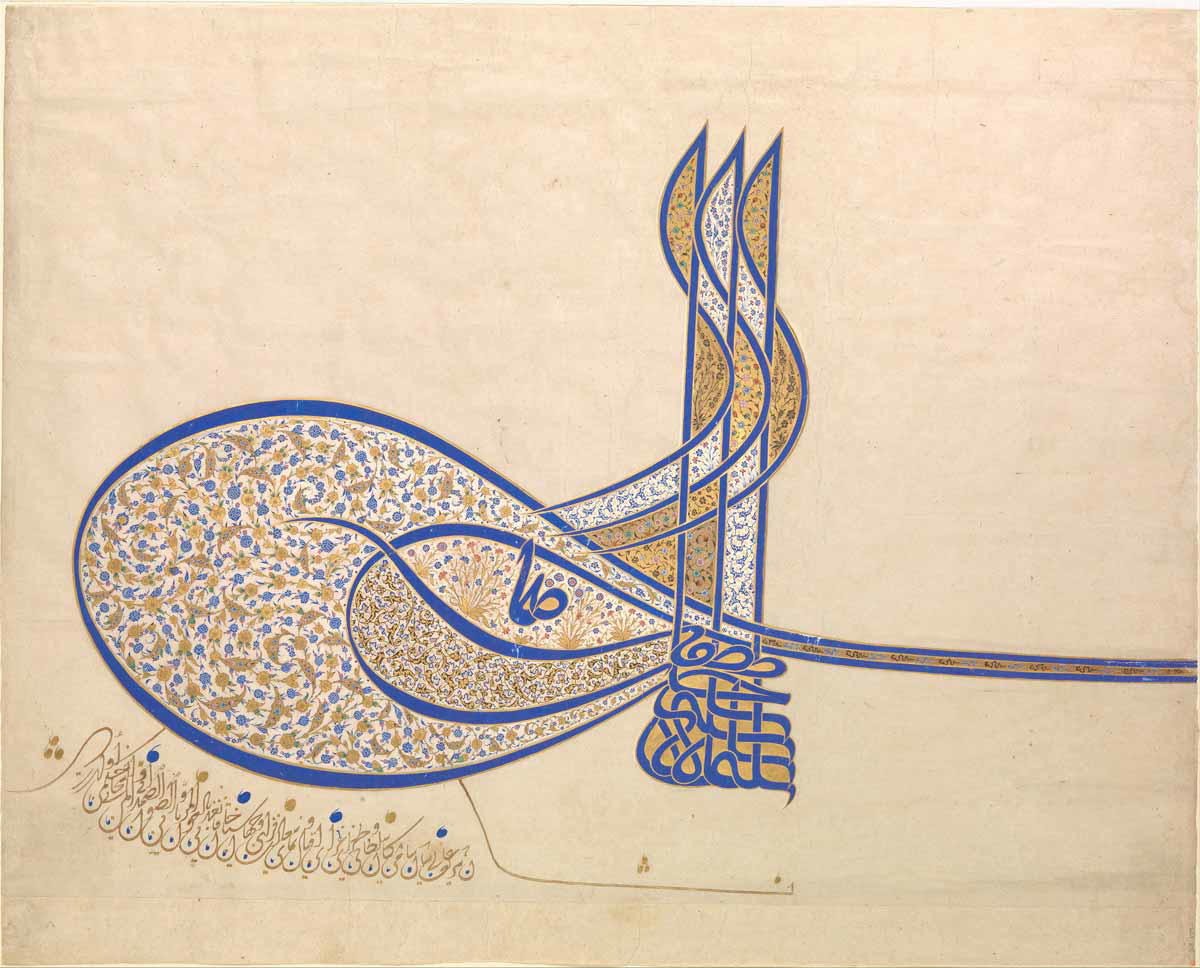
Calligraphy was considered an elaborate and distinguished visual art in Ottoman culture. Although the Ottomans were a Turkic-speaking dynasty, they wrote in the Arabic script (not language!). Calligraphy was already a popular art form found in earlier Islamic civilizations like the Abbasids. However, the Ottoman sultans not only patronized calligraphic works but learned the practice themselves.
During the time of artistic and cultural development known as the “Tulip Period” (c. 1718-1730), Sultan Ahmed III was trained by the most skilled calligraphers in the empire. He created large calligraphic inscriptions which still grace the entranceways of mosques in Istanbul.
A sultan’s personal monogram or seal, called a tughra, was also designed in a calligraphic style. This complex and stylistic writing that included the names of the sultan and his father was made into a signet ring that was used to authenticate royal documents.
6. Poetry and Prose

Poetry was a major aspect of Ottoman culture that was influenced by earlier Seljuk and Persian traditions. The Ottoman divan poetry not only used the Persian and Arabic poetic meters but preferred Persian and Arabic loanwords, as opposed to Turkish which was considered a less-refined language. To successfully write divan poetry, individuals would require an understanding of this foreign poetic meter, and of these non-Turkic languages.
Ottoman sultans thus had a thorough education in foreign languages and written poetry. During their time as princes in governorships around Anatolia, they would invite the most gifted poets in their cities to court, where poetry recitals would be held.
A sultan’s desires, interests, and dreams would all emerge through his poetry. Sultan Suleyman I wrote, under the penname Muhibbi, about his love for his wife Hürrem. In one poem, he wrote about Hürrem: “Throne of my lonely niche, my wealth, my love, my moonlight. My most sincere friend, my confidant, my very existence, my Sultan, my one and only love.”
Other Sultans, like Mehmed the Conqueror and Selim the Grim, known more for their conquests and authoritarian personas, also wrote ghazals, poems, or odes that focussed on romantic love, spirituality, and life.
7. Dramatic Entertainment
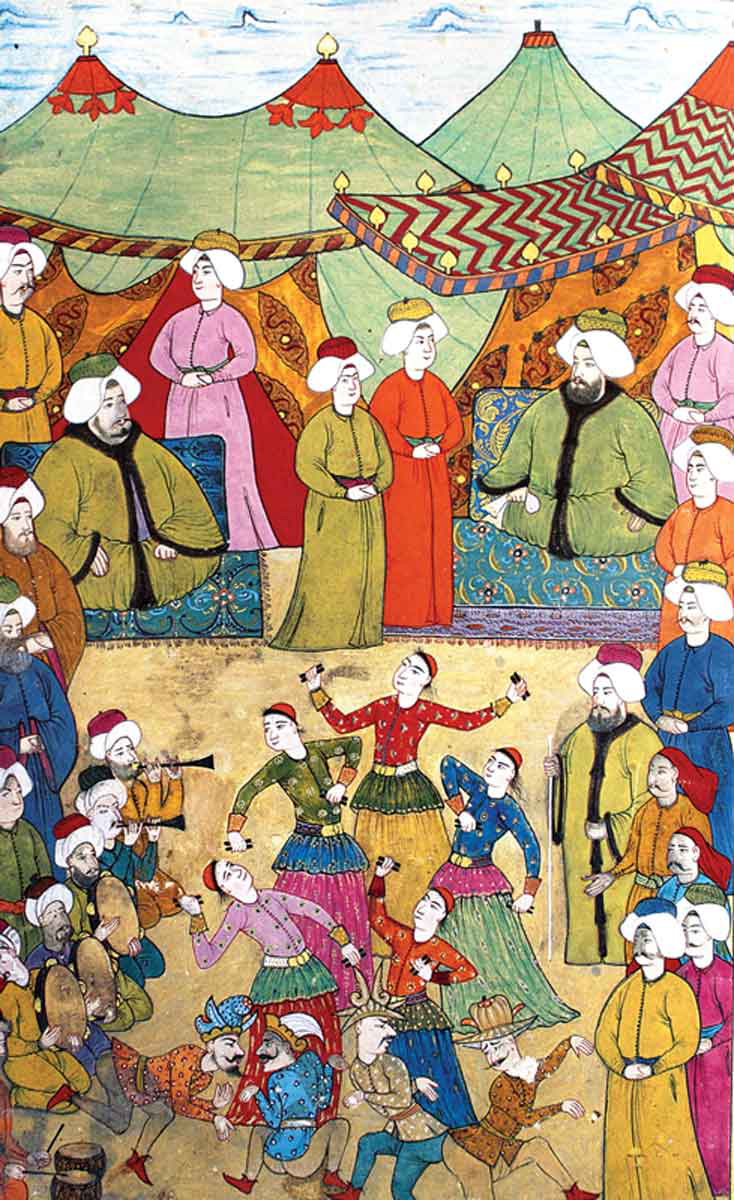
Dramatic entertainment was almost a daily feature of life in Ottoman Turkey. Particularly after the consolidation of Ottoman power in the early 16th century, performers, including actors, musicians, and dancers formed guilds, mirroring the theater companies in contemporary Tudor England.
Particularly during festivities, like circumcisions and weddings, sultans would organize shows to be performed in public squares. Some of the most popular forms of entertainment were theatrical displays on the topics of love and politics, comedic performances about taboo topics like interracial love and sexuality, and shadow puppet shows. Acrobatic performances, especially those involving wild animals like bears, were also a crowd favorite.
Sultans preferred to enjoy such forms of entertainment from the privacy of their palaces. In fact, they were often concealed by screens where they not only watched jugglers, actors, and acrobats but also where they could observe courtiers and dignitaries.
8. Music
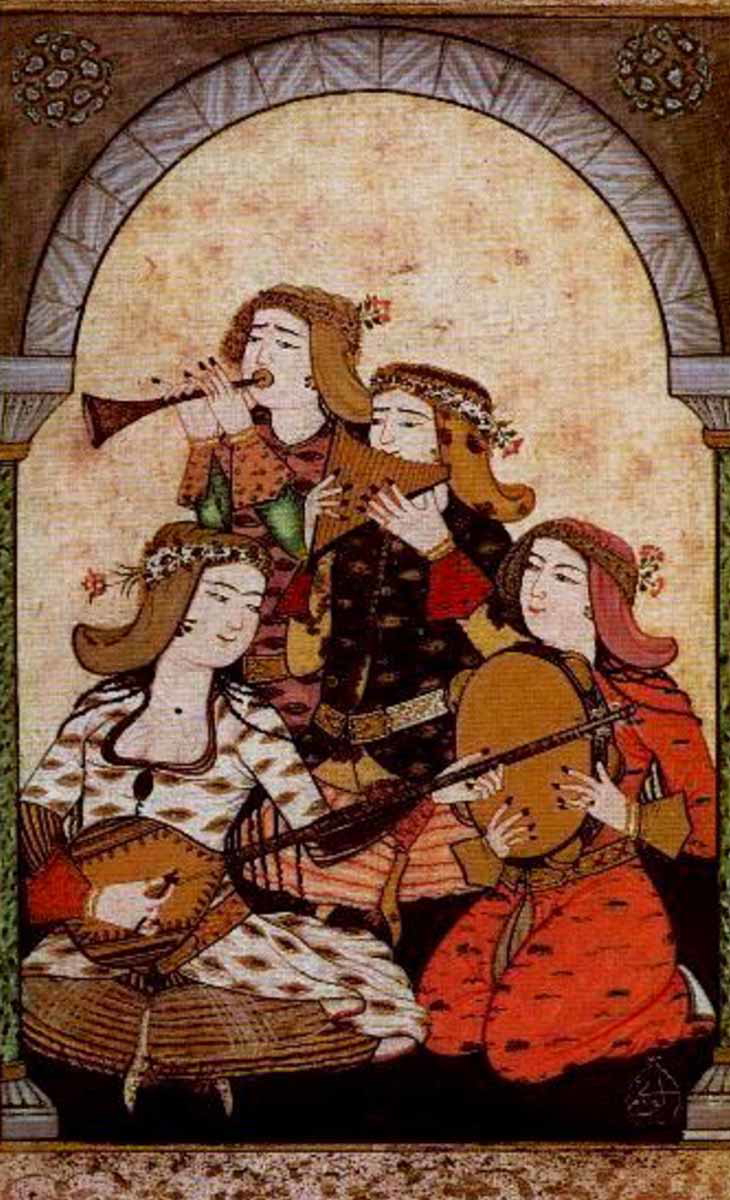
During the Tulip Period, Ottoman Turkey went through a period of peace that allowed it to focus on cultural innovation and development. The empire also became more open to foreign influence and ideas, learning about them from foreign dignitaries and ambassadors who began to settle in the country.
Around the same time, the written record of musical compositions also became an important aspect of Ottoman culture. Although earlier Sultans like Bayezid I (d. 1402) were known for their interest in musical compositions, there are few extant examples of musical composition from medieval Turkey.
In the 19th century, sultans like Mahmut II and Abdulaziz began to incorporate Western European musical theory into their pieces. What emerged was a pleasant blend of Western Asian and Western European music that became popular in a period of Ottoman decline, and lost popularity after the emergence of the Turkish Republic in 1923.
9. Feasts
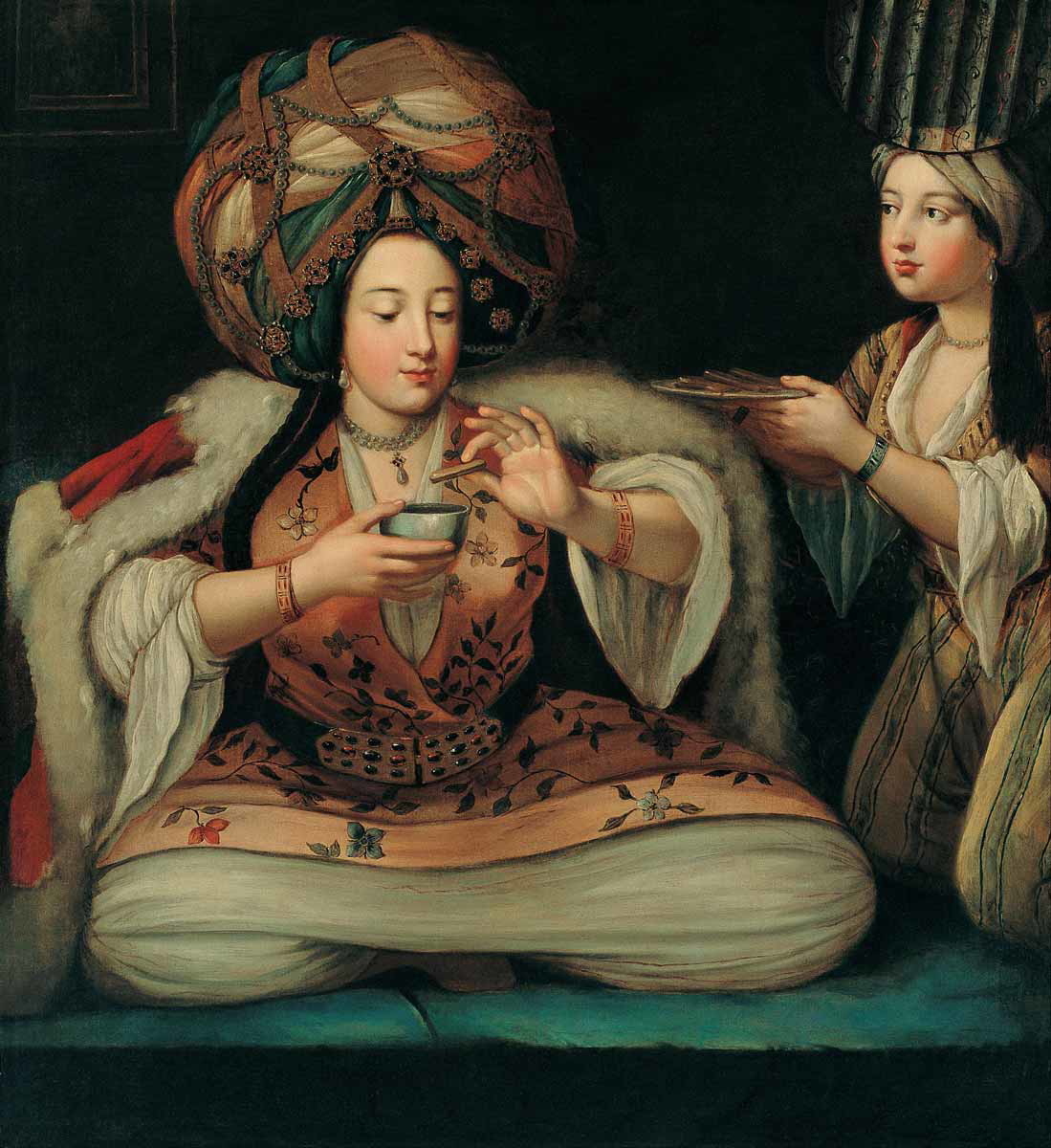
The Ottoman palace was a massive complex where a large fortune was spent on delicious meals for the sultan and his family. Early in the morning, the palace kitchen would be bustling with servants bringing in fresh produce from nearby markets in Istanbul, ready to prepare the sultan’s breakfast.
Generally, sultans would eat two meals a day: breakfast, and a midday meal. Each meal was cooked according to the sultan’s tastes. Rice pilaf, kebabs, vegetable dishes, seafood, yogurt, and sherbet desserts were some of the most popular foods found in the kitchen registries.
Grand feasts were generally held in times of celebration or to honor foreign dignitaries. During the wedding of Ayse Sultan, daughter of Sultan Murat III, (d. 1595), scores of dishes and a large cake shaped like a castle were displayed in the bridal procession. The sultan intended to display his immense wealth and generosity through the preparation of such feasts for his subjects.
